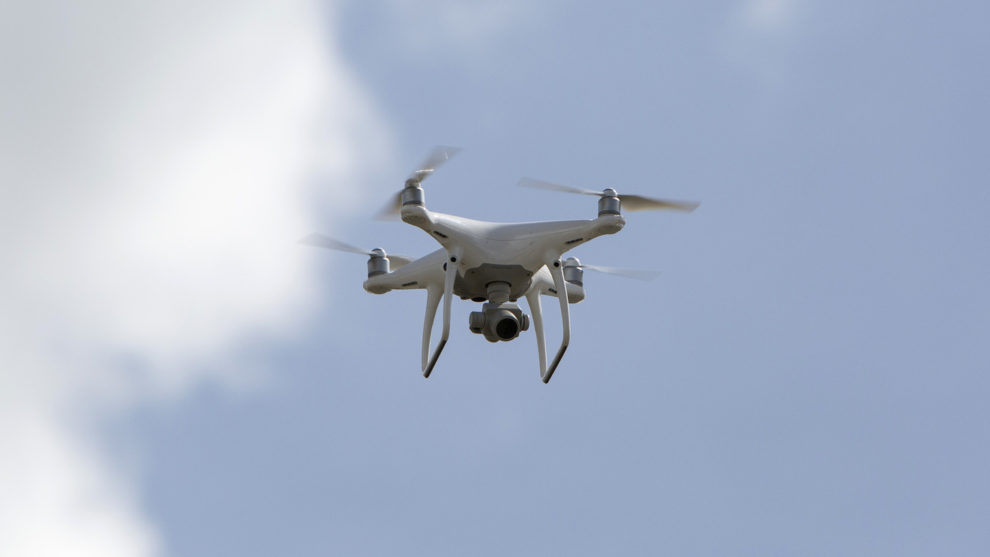
Here come the drones — and they are dangerous.
Yemen’s Houthi fighters last weekend claimed they were responsible for a crippling blow to Saudi Arabian oil production using drones and cruise missiles. The combination of the two confused and overwhelmed Saudi antimissile defense systems, causing enough damage to take out half of the kingdom’s oil production.
In addition to demonstrating just how ill-prepared the Saudis were, the attack also proved that this type of warfare is becoming increasingly common globally. With the proliferation of drones, countermeasures are also getting more advanced. Currently they range from using trained eagles to nets, jammers, antidrone guns, lasers and more.
But how effective are they?
Cost advantage
So far, it seems drones are winning, and the main reason is the price ratio between the two. It’s usually cheaper to assemble and arm a single drone than to build and maintain a costly antidrone weapon system.
For example, models that caused millions of dollars of damage to the Saudi oil industry can cost up to $15,000 each to build, and the drones that fighters in Yemen use cost as little as $45 per strike.
The majority of those are quadcopter-type drones that are commercially available all over the world. Houthis outfit them with bombs and cameras, making them lethal to infantry and a challenge to take down using conventional arms. While they won’t turn the tide of war, they can harass the enemy and cause stress to defending troops on the border.
Even though Saudi Arabia has access to expensive, high-tech military drones bought from the U.S. and China, the recent attack shows that money isn’t everything in warfare. Much can be achieved by exploiting holes in an enemy’s defenses using cheaper alternatives built from smuggled parts. So how do you fight the buzzing menace?
Defense against drones
Using laser beams to melt the threat from the sky seems to be the most cost-effective solution. Laser Weapon Systems (LaWS) may be expensive to build, but once installed on a ship or a defense installation, the cost of firing a single shot is negligible. Boeing BA, +0.31% and Lockheed Martin LMT, -0.19%, as well as some countries, including Israel, Germany and the U.K., are all working on laser defense systems of their own; the ETA is most likely the next decade.
The other type of defense is gaining access to the drone by disrupting communications between it and the controller, either by jamming the drone’s GPS/communication signals and causing it to crash or by taking over the drone itself.
This strategy is especially useful with commercially available models, which often operate on the same part of the electromagnetic (EM) spectrum as smartphones — hijacking the signal here can be done via smartphone or laptop, or by using a special gun-like gadget such as a Drone Defender.
Jamming and spoofing is a promising strategy since it can be launched as an area-based attack, targeting multiple drones with a series of attempts to gain control. It isn’t flawless, though — if a drone uses an encrypted signal to communicate, an attacker may need to decrypt it first.
Microwave guns
Finally, there are physical measures, such as nets that can be fired from a special launcher or dropped on the offending drone by another unit or a group of them; firearms; and even microwave guns that can fry a drone’s electronics. Those methods may be useful when facing a single drone, or a group of slow-moving (hovering) targets, but they are an inadequate countermeasure against military-grade unmanned air vehicles (UAVs) such as the General Atomics MQ-9 Reaper.
As you read this article, the drone-versus-defense cat-and-mouse game continues, with various resistance groups and terrorists adding their own spin to the mix. In the end, defenses may be getting more sophisticated, but drone development is always one step ahead: Special reflective coating can deter laser weapons, shields protect against microwave attacks and encrypted communication makes drones harder to hack.
As technology and human ingenuity advance, so will the drones, turning them into an inevitable staple of modern warfare.
Jurica Dujmovic is a MarketWatch columnist.











Add Comment